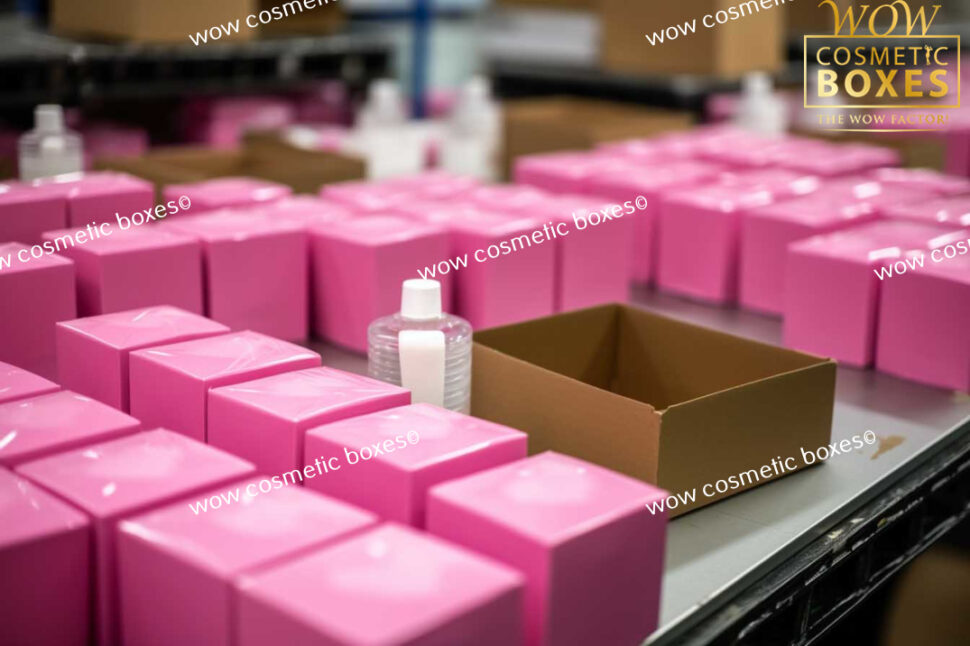
In the ever-evolving world of cosmetics, packaging design trends have played a significant role in shaping the industry.
As we delve into the retro perspective, we uncover a captivating journey that intertwines nostalgia with consumer perception. The allure of custom cosmetic boxes, reminiscent of bygone eras, has become a powerful trend.
By exploring the impact of packaging on brand identity, we gain valuable insights into the future implications of this trend in the cosmetic industry.
Join us on this insightful exploration of how packaging trends have shaped the cosmetic industry.
Key Takeaways
- Retro packaging in the cosmetic industry evokes nostalgia and familiarity, creating a sense of authenticity and quality.
- Retro packaging appeals to consumers who long for a simpler time and targets specific demographics such as millennials and vintage enthusiasts.
- Custom cosmetic boxes offer personalized and nostalgic experiences, reflecting consumers’ desire for connection and authenticity.
- Packaging trends in the cosmetic industry play a significant role in establishing brand identity, communicating brand values, and differentiating brands from competitors.
Evolution of Packaging Design Trends in the Cosmetic Industry
The cosmetic industry’s evolution of packaging design trends has significantly influenced consumer preferences and brand identity. One of the major shifts in recent years has been the emphasis on sustainable packaging and minimalist design.
With growing concerns about the environmental impact of excessive packaging waste, consumers are increasingly drawn to brands that prioritize sustainability. This has led to the rise of eco-friendly materials such as biodegradable plastics, recycled paper, and bamboo.
In addition to being environmentally conscious, minimalist design has become a dominant trend in the cosmetic industry. Simple, clean lines and uncluttered packaging convey a sense of sophistication and elegance. Brands are recognizing that less is more, and are opting for minimalist designs that create a strong visual impact while also reducing waste.
As the industry continues to evolve, it is clear that sustainable packaging and minimalist design will remain key drivers of consumer preferences and brand identity.
Impact of Retro Packaging on Consumer Perception
Occasionally, retro packaging can significantly influence consumer perception and evoke nostalgia, creating a sense of familiarity and trust in the cosmetic industry. This trend taps into consumer preferences for the past, as many individuals associate retro packaging with a sense of authenticity and quality.
By incorporating elements from previous eras, cosmetic brands can appeal to consumers who long for a simpler time and seek products that reflect their values and aesthetics. Retro packaging also allows brands to stand out in a crowded market by offering a unique and eye-catching design.
Moreover, it can serve as a marketing strategy to target specific demographics, such as millennials who appreciate nostalgia and vintage aesthetics.
Custom Cosmetic Boxes: A Nostalgic Trend in Packaging
Custom cosmetic boxes have become an increasingly popular trend in packaging, reflecting consumers’ desire for personalized and nostalgic experiences. With the rise of nostalgic branding, brands are leveraging custom cosmetic boxes to tap into consumers’ emotions and create a sense of connection and authenticity. By incorporating vintage-inspired designs, retro color palettes, and iconic motifs, these custom boxes evoke a sense of nostalgia, taking consumers back to a simpler time.
Additionally, sustainable packaging is also a key consideration for brands. Custom cosmetic boxes made from eco-friendly materials, such as recycled paper or biodegradable plastics, not only align with consumers’ growing concern for the environment but also enhance the overall brand image.
As consumers continue to seek unique and meaningful experiences, the trend of custom cosmetic boxes is likely to thrive in the future.
The Influence of Packaging Trends on Brand Identity
Packaging trends and brand identity are intricately linked, shaping consumers’ perceptions of a brand and influencing their purchasing decisions. The way a product is presented through its packaging plays a crucial role in establishing brand recognition and attracting consumers.
Here are four ways in which packaging trends impact brand identity:
- Visual appeal: Packaging design can captivate consumers and make a brand stand out in a competitive market.
- Brand story: Packaging can communicate a brand’s values, heritage, and mission, establishing an emotional connection with consumers.
- Consumer psychology: Packaging elements such as color, typography, and imagery can evoke certain emotions and influence buying behavior.
- Differentiation: Innovative packaging trends can help brands differentiate themselves, creating a unique identity in consumers’ minds.
Future Implications of Packaging Design in the Cosmetic Industry
Advancements in technology and changing consumer preferences are shaping the future implications of packaging design in the cosmetic industry. As sustainability becomes increasingly important, cosmetic brands are exploring innovative ways to create sustainable packaging. This includes using eco-friendly materials, such as bioplastics or recycled materials, and reducing the overall environmental impact of packaging production and disposal.
Additionally, digital packaging innovation is expected to play a significant role in the future of cosmetic packaging. Augmented reality (AR) and near-field communication (NFC) technologies are being integrated into packaging to enhance the consumer experience, allowing them to virtually try on products or access additional information about the product.
These advancements in sustainable packaging and digital innovation are expected to revolutionize the cosmetic industry and cater to the evolving demands of environmentally-conscious and tech-savvy consumers.

